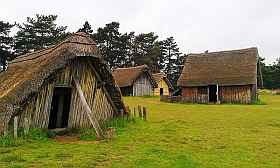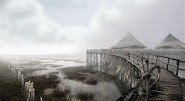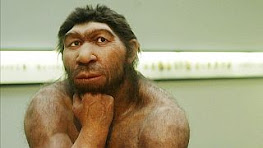9 : From Britons to Saxons

West Stow. A Recreation of a Saxon village. This post will (I hope) complete my effort to track the changes in the landscape and population of this sceptred isle. In fact it isn't clear that the landscape changed much over the first few centuries after the Romans left. But for continuity I have to cover who it was that 'wasn't doing much'. In future posts, covering the Middle Ages and beyond, I will adhere more strictly to the theme of the evolution of the landscape . These are the Dark Ages, not because they were particularly gloomy, but because we don't know much about them, filling the gaps by superimposing our current notions on how things are organised around kings, nations and regular armies. The reality was almost certainly more chaotic. It might be better to think of early England as being a bit like the Congo, with weak or non-existent central control and people with strong family and tribal loyalties. There would probably have b...


